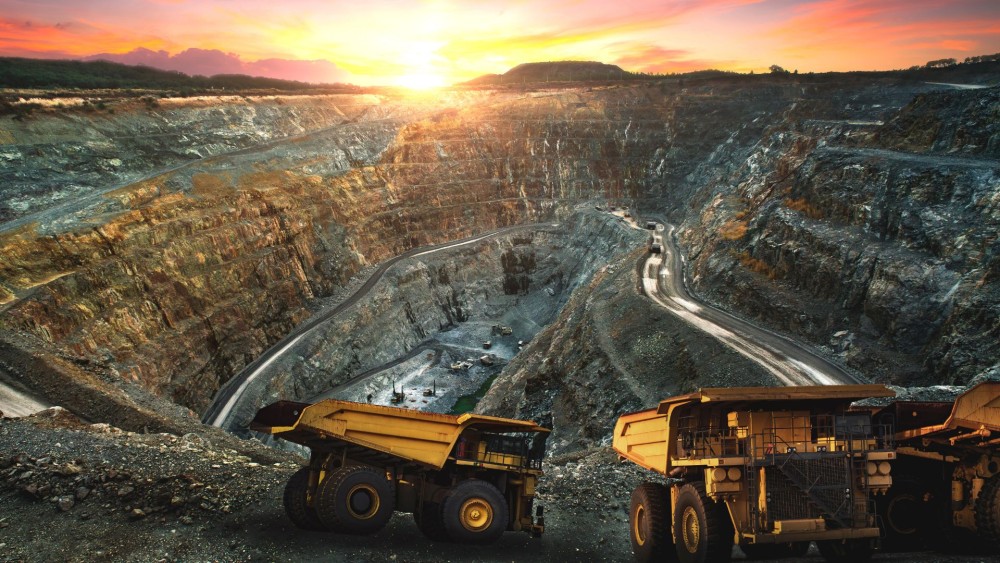Indonesia’s downstreaming policy gives its mining sector significant room for growth
26 May 2023

Indonesia’s mining sector has seen its share in GDP contribution growing rapidly in the last five years, from just 7.18% in 2016 to over 12% as of the end of 2022. In the first quarter of 2023, its share of GDP contribution remains significant at 11.85% and a notable increase compared to the same period in the previous year of 10.37%.
These developments can be attributed in parts to the cascading effect of the COVID-19 pandemic as well as Russia’s invasion on Ukraine in February 2022, which had led to a between 80 and 120% increase in the prices of base metals such as nickel and copper. That said, another major reason why Indonesia’s mining sector have been growing so rapidly is Indonesian President Joko “Jokowi” Widodo’s concerted effort to develop the country’s refinery industry – a process known locally as “downstreaming”.
In the past, Indonesia’s mining industry has concentrated on mining and exporting raw ores rather than being a part of the production value chain. Through this downstreaming policy, the current administration has succeeded in capturing value from the production and exports of more refined products such as, in the case of nickel, ferronickel and nickel matte. Indeed, these industrial policies were set in motion even before the COVID-19 pandemic struck, such as through the ban on exports of raw nickel announced in 2019, allowing the government to grow the economy throughout the pandemic and after it has receded.
As Indonesia possesses some of the largest, if not the largest reserves, for a number of raw minerals, such as the aforementioned nickel and copper, as well as tin, bauxite, and gold, the country has seen a significant increase in foreign and domestic investments towards the establishment of mineral refineries, also known as smelters. For example, currently, the country has 13 nickel smelters in operation – from just 2 in 2014. By 2024, it expects to see 30 smelters running at full capacity. Several other processing plants are also in the works and are expected to be fully operational by 2025.
| Commodity | Global Mined Production Volume | Indonesia’s position as global producer | ||
| Indonesia (%) | Rest of the World (%) | Total Tons | ||
| Nickel | 23 | 77 | 2.2 Mt | 1st |
| Tin | 19 | 81 | 277 Kt | 2nd |
| Coal | 7 | 92 | 7.560 Kt | 3rd |
| Bauxite | 9 | 91 | 378 Mt | 4th |
| Gold | 3 | 97 | 3.5 Kt | 10th |
| Copper Concentrate | 2 | 98 | 20.8 Mt | 12th |
Mt = Million metric tons; Kt= Thousand metric tons;
Source: Mckinsey
Under these condition, Indonesia’s mining sector seems poised to continue to grow. However, the record high prices of base metals are unlikely to stay due to governments around the world needing to keep inflation in check, as already demonstrated by central banks raising interest rates across the globe. The tighter financing condition will be a challenge for mining companies in securing supply. With that said, demand for the aforementioned minerals should remain strong as they are deemed important, if not critical, for the employment of various technologies towards combating climate change, such as the transition from internal combustion engine vehicles to electric vehicles.
Meanwhile, following his success in establishing a nickel processing industry, President Jokowi announced in December of 2022 that his government would also ban the export of numerous other raw mineral ores, including tin, bauxite and copper. Slated to be effective this June, the announcement was met with protests from industry players who said they were not ready to shift towards producing refined ores.
As of the time of writing, the government has not shown any signs of backing out on the decision. It may be noted however that the government had come to an agreement with at least five major companies to allow them to continue exporting raw ores. The agreement was made after the government noted that the companies, namely PT Freeport Indonesia, Amman Mineral Nusa Tenggara, PT Sebuku Iron Lateritic Ores, PT Kapuas Prima Citra, and PT Kobar Lamandau, had made serious progress on their commitments in establishing refining facilities for their respective extracted minerals. If nothing else, this shows the Indonesian government’s willingness to compromise in order to ensure the success of its downstreaming strategy.
Considering these latest developments, it should be clear that Indonesia’s mining sector still offers significant business opportunities, not just for mining companies but also for various other sectors such as heavy machinery – which has seen production ramp up by 2.98% in the first quarter of 2023 thanks to increased demand from the mining sector – and digital and analytics technology – which offers optimization in mining and refining processes that could help companies become industry 4.0 leaders.

